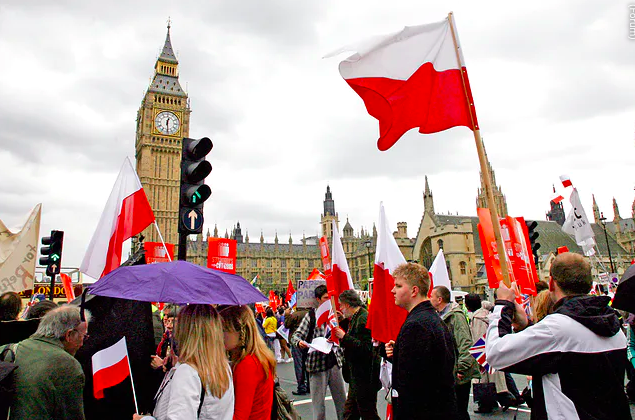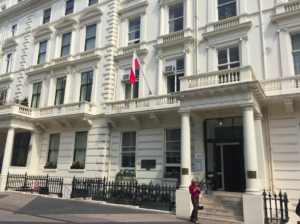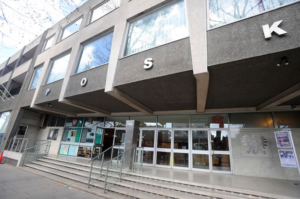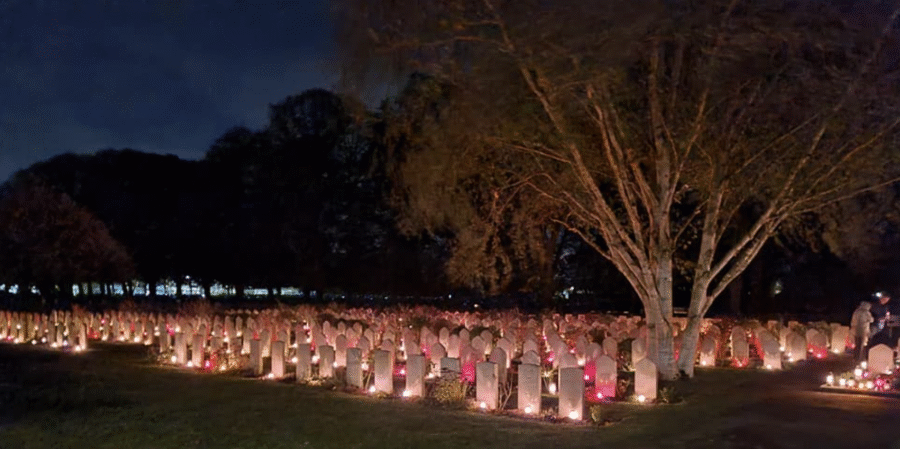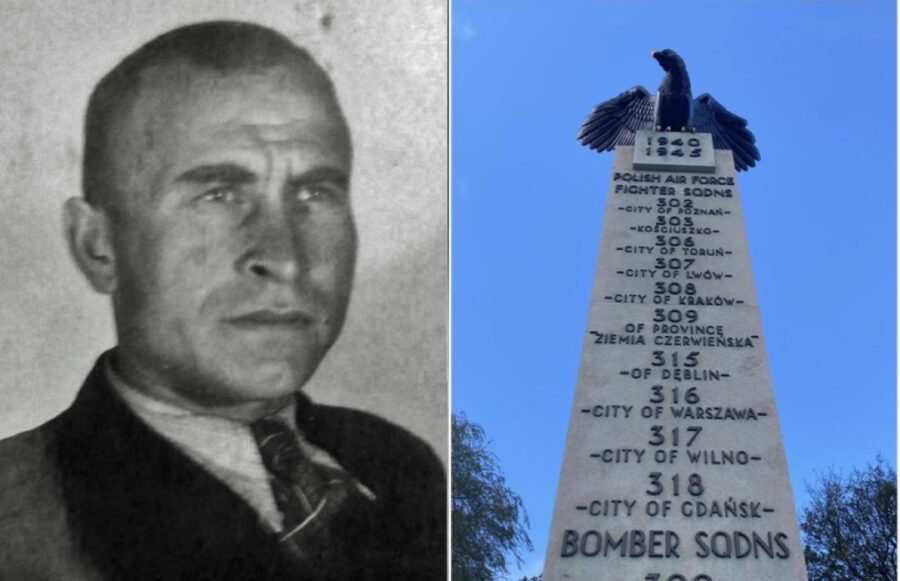The Polish diaspora began to arrive in The British Empire after the November Uprising which took place in 1830-1831 in Poland. At the end of the 19th century, the Polish minority had already opened its own publishing houses, schools and pastoral ministry.
The first Polish church in the British Isles was opened in 1930. The Polish Catholic Mission in England and Wales purchased a church in the Islington district at 2 Devonia Road. The church became the official seat of the Polish Catholic Mission, a parish temple, and also served as the Polish Saturday school. The act of consecration and transforming the church into Polish use was made by the Primate of Poland, August Cardinal Hlond, on October 12, 1930. During World War II, the church served as the home for the Polish Government in Exile, and, along with the adjacent building at 4 Devonia Road, provided shelter for many Polish soldiers.
The Polish community in England grew significantly during the emigration associated with World War II. In 1931, the number of Poles in Great Britain was 44,642, and in 1951 it increased to 162,339.
On December 12, 1939, at a meeting with Lord Lloyd, President of the British Council, with the participation of Republic of Poland Ambassador, Edward Raczyński, a decision to open the Polish Cultural Centre in London was made. Through the years the club has been the centre of the social, cultural and social life of Polish diaspora in London.
The development of the centre was greatly enlivened by soldiers and their families who came to Britain during and after World War II. Soldiers, living legends whose life was shaped by values as ‘’God, Honour and Homeland’’. Those who won the war and then built, as the Pope said „Poland outside Poland”. Heroes who were carrying on their shoulders responsibility for the independent Polish Republic. The pilots who won the Battle of Britain and earlier even harder one at Monte Cassino.
In the club, a General Table was created. General Anders had been sitting at this table with his wife, but also other legendary generals as Kopaliński, Kukiel, Rudnicki, Szyszko-Bohusz, Odzieżrzyński, Dembiński, Ząbkowski, Bór-Komorowski,
Smoleński, Grudziński, Sosabowski, Pragłowski and Sawczyński. A Colonel Table was also set up. It was a favourite place of colonels: Bieliński, Grzembo, Gnatowski. Many politicians and government members such as Tadeusz Bielecki, Rowmund Piłsudski, Lidia and Adam Ciołkoszów were also a frequent guests at the club. Other famous Polish soldiers like Home Army (AK) General Ziemski, Dr Garliński, Colonel Mandziara, Eng. Gąsiewicz were among other guests regularly visiting Ognisko Polskie.
Other famous club guests include Ludwik Maria Łubieński, president Edward Raczyński, and Stefan Zamoyski, a social activist. Many people associated with the world of literature and art were also coming to the club to spend some time with other members of the Polish diaspora in the UK. The famous musician Artur Rubinstein and the well-known painter Feliks Topolski.
Among the guests were people as Stanisław Baliński, Marian Hemar, Stanisław Mackiewicz, Ferdynand Goetel, Zygmunt Nowakowski, Wacław and Karol Zbyszewski. Tadeusz Nowakowski, Józef Łobodowski, Bronisław Przyłuski, Tymon Terlecki, Wiesław Wohnout, colonel. Antoni Bogusławski, Juliusz Sakowski, Mieczysław Grydzewski, Wacław Günther, and from the younger generation Adam Zamoyski, an eminent historian, were also regulars.
Ognisko Polskie is the first Polish club, restaurant, theatre and exhibition hall in London. The club was opened on July 16, 1940 and is still open at present. The ‘’Ognisko Polskie’’ today is situated in the same place at 55 Exhibition Road in the prestigious South Kensington area.
Across the years the contributions of thousands of simple Polish soldiers helped establish the Polish Social and Cultural Centre, several parish houses and buildings of the Association of Polish Veterans. An umbrella organisation, the Polish Union, was also created. The main goal of this organisation was to focus on and represent Polish diaspora interests to the British government.
Another wave of political emigration came to Great Britain after the declaration of martial law in Poland in the 1980s. Many people decided to leave communist Poland and emigrated to the UK. This wave contributed to the dynamic development of the Polish Cultural Centre, which is currently located at King Street in the Hammersmith district.
In the beginning, from 1966, the House of the Polish Social and Cultural Centre operated at 9 Ravenscourt Avenue (there was also the Eastern Institute „Reduta”). Originally at King Street, there was a house where from 1966 to 1974, the Lviv Circle in London was based. In 1974, both the house and the adjacent Baptist church were demolished. Another building was raised. The Circle of Lviv moved to this new premises first in 1974, and then in December same year, the POSK was moved as well. The Polish Social and Cultural Centre (POSK) was officially opened in 1974 by the Polish community in Great Britain on the initiative of Ing. Roman Wajda. In May 1977, the library was moved to the building.
In the building, one of the rooms for ceremonies was called the „Raspberry Hall”. Today this hall still carries the same name. Until the mid-1980s, the building housed the University, bookstore, theatre, Posk club, restaurant „Łowiczanka”, and the Youth Club. POSK has become the centre of Polish independence, socio-cultural, artistic and social life. It currently houses the Polish Library in London, which was founded in 1942, and hosts many exhibitions, film screenings and theatre performances.
POSK has become a house of many Polish diaspora organisations, such as the Józef Piłsudski Institute, the Polish University in Exile (PUNO), the Polish Scientific Society in Exile (PTNO) and the Association of Polish Veterans (SPK).
In 2003, before the Polish accession to the European Union, around 69,000 Poles lived in Great Britain. However, the biggest wave of Polish emigration arrived in Great Britain after Poland joined the European Union in 2004. Poles have become the second largest group of immigrants in Great Britain, after the Hindu population. Polish is the second most popular language in England and the third in Great Britain (after English and Welsh). About 1% of the UK population uses Polish daily. In 2018, the Office for National Statistics estimated the number of Poles living in Great Britain at 905,000.
Although many Poles are now deciding to return to the country, the Polish community in England constitutes already such a large percentage that it has become a very important element of the British political scene. Any sensible British politician takes into consideration the stance and views of the Polish diaspora. British Prime Minister Teresa May and Boris Johnson publicly praised the contribution of the Polish people and businesses in Great Britain and willingly participate in important Polish historical and cultural celebrations.
And what is the future ahead of us? What impact will Brexit have on Polish and British mutual relations? We will see!
Alicja Prochniak
Pictures: British Poles


